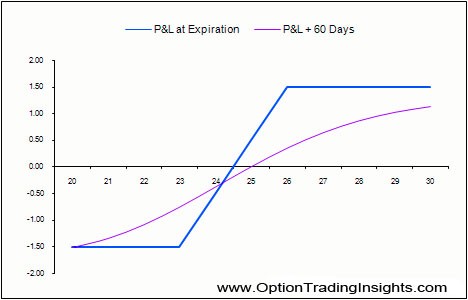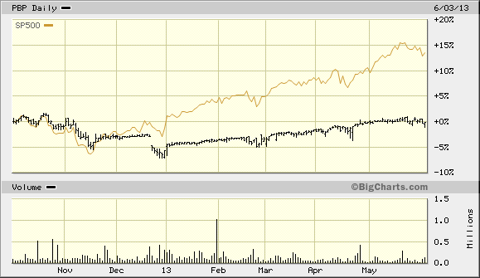The Leveraged Covered Call Option
Post on: 25 Январь, 2017 No Comment

Your e-mail has been sent.
The covered call is perhaps the most widely known options strategy. It involves selling a call option on a stock you already own. There is a variation of the covered call strategy, known as the leveraged covered call, that allows you to simulate a covered call position while not having to put up as much capital.
Interested in knowing more? First, let’s review how the basic covered call works, so you can fully understand this slightly more advanced version of the covered call strategy.
The covered call
The purpose of a covered call strategy is to generate income on a stock you own. It involves owning a stock and selling call options on the same stock. You would consider executing a covered call if you had a neutral to slightly bearish outlook on a stock.
For instance, suppose you owned XYZ stock and believe that the stock might trade flat or weaken slightly over a certain period of time. You might decide that you do not want to sell the stock (perhaps because you believe it may increase in price in the long run), and would like to generate some income on it during the period of time that you think it will not go up in price.
If you sold one call option on the stock you own, you would effectively be agreeing to sell 100 shares of the stock at an agreed-upon price, known as the strike price, if the option is assigned. You would earn up-front income for selling the option. This is a covered call.
In doing so, you would forgo potential profits on the stock if the stock price rose above the strike price of the sold option and the calls were exercised. In this event, you would have to sell the stock at the strike price, so you would need to be comfortable with that trade-off.
The leveraged covered call
This less well known variation of the traditional covered call strategy provides an alternative if you would like to put up less capital at the outset of the trade. The covered call and leveraged covered call strategies share the same outlook, which is neutral/bearish over the short term and bullish over the longer term.
To construct the leveraged covered call, you would sell a shorter-term call (usually an out-of-the-money call). The key difference between a covered call and a leveraged covered call is that instead of owning the underlying stock upon which you sold the call, you would buy a long, deep in-the-money “LEAP.” Short for long-term equity anticipation securities, LEAPs are options with a longer time until expiration. typically nine months to a year.
The assumption here is that the purchase of the LEAP should cost less than purchasing the same amount of shares of the underlying stock, while simulating the profit/loss potential of the covered call position.
Greeks and the leveraged covered call
Profit/Loss diagram: covered call
Source: Fidelity Learning Center.
There are a few things you can do to potentially improve the probability of a successful leveraged covered call trade.
As with any other options strategy, greeks can be invaluable for making the most of your trade. One greek in particular, delta, is especially useful. Delta is the sensitivity of an options price to the change in the price of the underlying asset.
“The strike price of the purchased LEAP should have a high delta so that there will be a high correlation between the stock price movement and the option price movement,” says Colin Songer, a strategy desk representative with Fidelity. This will help simulate the profit/loss diagram of the covered call strategy (see the chart right).
“One thing to keep in mind, though, is that the higher the delta, the more expensive the LEAP, all other factors being the same,” Songer notes.
Capital requirements, assignment risk, volatility

The maximum risk of both strategies is similar: The stock could go to zero. In order to choose the appropriate strategy for the covered call or leveraged covered call, you should consider several factors.
The primary advantage of the leveraged covered call is that the purchased LEAP will cost less than buying the same number of shares covered by the option. This leads to a potentially higher return on investment and lower maximum loss.
However, the sold call is at risk of assignment (i.e. you would be short the shares). Depending on whether the option was assigned prior to the ex-dividend date, this could result in a position where, unlike the covered call strategy, you would need to pay the dividend. Consequently, this could have a negative effect on the profitability of this strategy.
Unlike the covered call strategy, the purchase of a LEAP means you are long vega. Vega is a measure of an option price’s sensitivity for a given change in implied volatility. An increase in the implied volatility (i.e. the expected volatility) of an option will increase the value of a call or put option, and falling implied volatility decreases the value of either type of option. Simply put, an increase in implied volatility (IV) is good for this strategy because it would increase the value of the purchased call LEAP.
However, if IV were to decrease, so would the value of the options. That would hurt the strategy. With the LEAP being deep in the money, vega exposure would be less than at-the-money options, but would still be high due to the longer expiration.
A few leveraged covered call tips
You may want to consider selling a short-term call that is nearly at the money to take advantage of the acceleration of another greek, theta, which measures the impact of the time decay that typically happens prior to expiration.
This strategy may provide an opportunity to adjust strike prices as the price of the underlying security moves. This allows for an increase in the frequency of selling calls against the same LEAP. “If you are a little more bullish, you can use out-of-the-money call options to allow for a greater balance between potential stock appreciation and premium income,” Songer suggests. “Out-of-the-money options would be used for a more bullish outlook, and they allow for a higher return on investment.”
Finally, if the security moves close to the strike price of the short call, it may be time to reevaluate the strategy and either roll the short option up or out to the next month, buy back the short call and let the long option run, or close out the strategy altogether. If the short call goes in the money and your outlook changes to bearish, you can take on the assignment.
Learn more
- Discover more about trading options .
- Find options contracts .
- Test single- and multi-leg options strategies with a strategy evaluator (login required).














